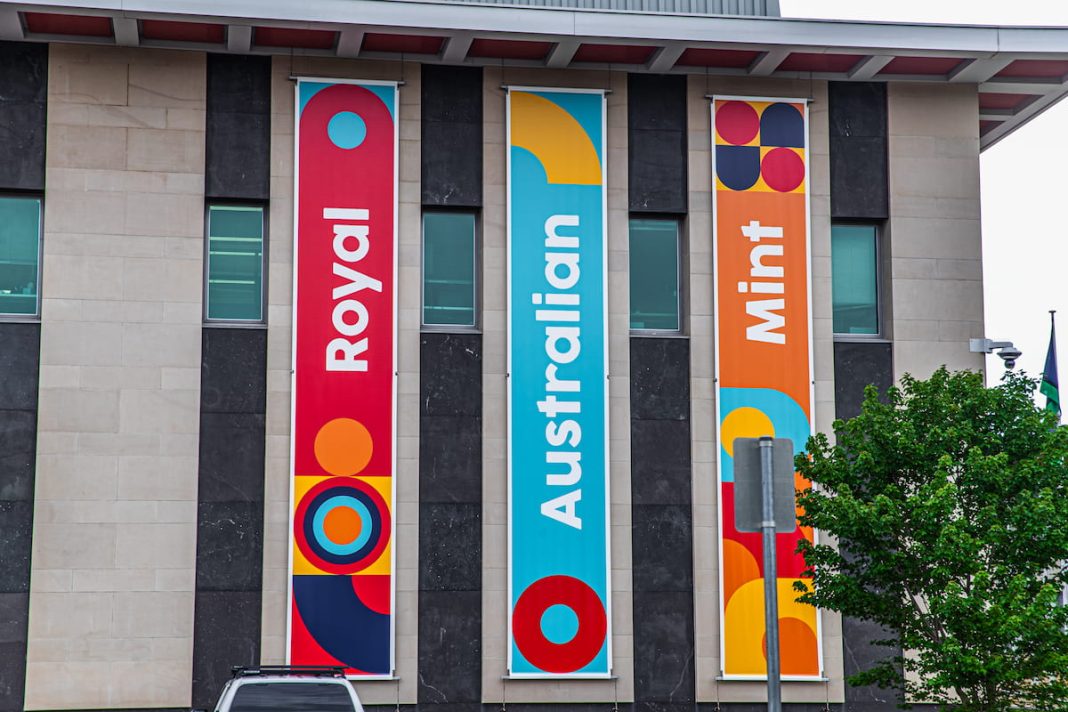The Royal Australian Mint could one day transform into a museum as coin production steadily declines – 110 million coins in 2022-23 compared to 238 million in 2002-03. However, in an increasingly cashless society, the Mint is adapting to remain relevant.
For the past decade, the mint has pivoted towards collectible and investment coins (like the new $99 Bluey silver proof coin), capitalising on its capabilities to mint souvenirs, and it’s just upgraded its curated gallery to showcase its history and artefacts.
Leigh Gordon, CEO of the Royal Australian Mint, stated that there is no doubt about the steady decline in the demand for coins.
“We maintain the national coin collection here of coins and artefacts which tells the story of the mint and cash in Australia,” Leigh said. “So, we certainly see there’s a role for us to continue as a national institution.”
Despite the downward trend in coin production, 110 million coins (in 2022-23) still sounds excessive in today’s cashless world. Where does it all go?
Apparently, down the back of a couch.
At a Senate Committee in 2014, the Mint stated that “most of the coins that we provide are against coins that disappear down the back of chairs, down the back of car seats, into rubbish dumps and, in some cases, are taken overseas”.
That’s right, a hundred million or so coins disappear each year. So, in plain speak, the Federal Government profits from our losses.

“It’s interesting when you think about coins down the back of the couch,” Leigh said. “We were talking to a company that deals in scrapping cars and railway carriages and recycling and they reckon that in the average car they get about a bit over $2 in coins but the average railway carriage, they’re getting about $60 in coins that have been lost.”
Despite a significant drop in coin production, the mint still makes a tidy profit. This is thanks to banks paying face value for the coins – even though they cost much less to make. For example, in 2022, the $2 coin cost around 20 cents to make, and the 50 cent coin cost about 15 cents
It sounds like a rort, but it’s called “seigniorage” (an ancient French word that refers to the profit only a seignior – feudal lord – can make from the exclusive right to mint coins). Whatever you call it, it’s a nice little business to feed Commonwealth coffers. In 2022-23, the Mint sold 110 million pieces to the banks worth about $64.5 million.
“The Mint remains a viable financial institution at this stage that’s covering its costs and giving a return to government,” Leigh said.
Today’s declining coin production is a far cry from 60 years ago when the Mint was producing coins to set up the decimal currency system – 590 million coins were produced in 1965-66.
The demand for coins ebbs and flows, and, strangely, during COVID, the demand for coins (and toilet paper) skyrocketed – as much as 175 million pieces were produced in 2020.
“The theory that we’ve got is that when there’s a crisis, people are looking for financial reserve, something that’s a bit more consistent, a store of value,” Leigh said. “We certainly see people being reminded of the importance of cash by natural disasters – trying to buy fuel on the south coast when the bushfires were on was difficult and some of the more recent tech outages also reinforced that.”
Cash may be on the way out but as long as the public wants it, the Mint will keep on striking new coins (just don’t lose it).
“The government’s got a strategic plan and it certainly commits to cash being available for the Australian people as long as they continue to use it,” Leigh said. “That’s the role of the mint, to fulfil that part of that equation.
“I quite like this analogy, there’s no doubt that the bicycle is no longer a mass form of transport, although some people in European countries would disagree. I don’t think we’re going to end up in a bicycle-less society because there is an underlying demand there for people to keep riding their bikes.”



